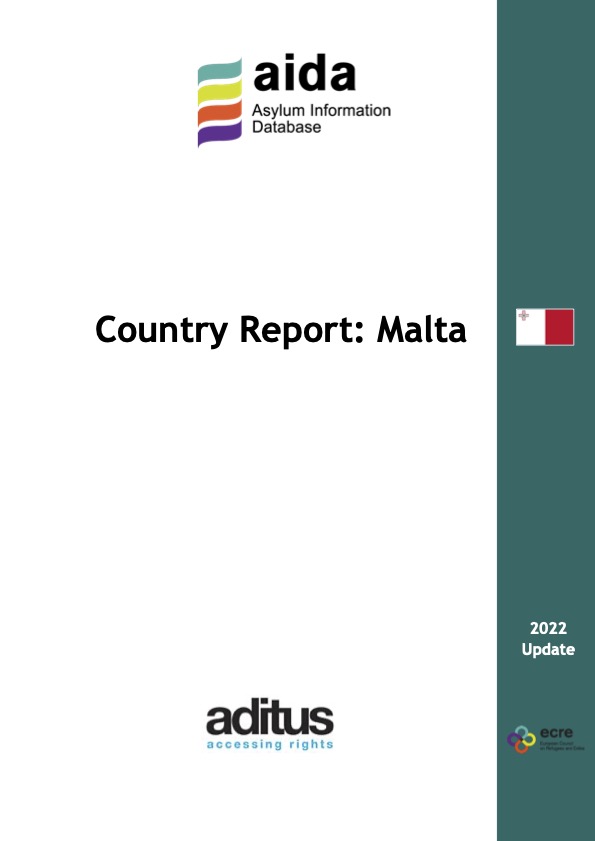We are extremely happy to share with you the publication of the most comprehensive report on Malta’s asylum regime, covering 2022: the Asylum Information Database report (AIDA). This year, the report also includes a separate Annex providing detailed information on the implementation in Malta of the Temporary Protection Directive throughout 2022. The AIDA report is published by ECRE.
The report provides in-depth information on the various aspects of the asylum regime: asylum procedure, reception conditions, detention, content of international protection. It is based on months of desk research, complemented with information provided by various entities…who we sincerely thank for their cooperation.

Key points on 2022:
- The top three nationality groups of applicants in 2022, representing 44% of all applicants, were persons fleeing armed conflict or undemocratic regimes: Syrians (243, 25%), Eritreans (93, 10%) and Ukrainians (92, 9%).
- At the end of 2022, the majority of pending applications were from applicants who would, at least prima facie, be eventually granted international protection by Malta: Syrians (359), Eritreans (178) and Somalis (166). Looked at in conjunction with figures of new applications, it is clear that many of these applications have been pending at first instance for at least 1 year.
- It is also noted that all decisions relating to applicants from Egypt, Bangladesh and Senegal were based on the safe country of origin concept, as no substantive rejections were issued in relation to any of these applicants
- The reception system is not under pressure anymore and space is largely available in across all open centres. Despite this, non-vulnerable asylum seekers must exit the open centre at 6 months and this also terminates material reception conditions.
- Some positive improvements were noted with regard to the reception of unaccompanied minors, but the legal guardianship system is still plagued by unjustifiable delays and lack of independence of the guardians.
- All asylum seekers, including vulnerable applicants and unaccompanied minors, rescued at sea are still automatically detained for several weeks after arrival in terms of the Prevention of Disease Ordinance. During this detention period, no entity is permitted to visit them.
- Access to detention remains an issue for all actors in the field, including the UNHCR.
We regret to note that, for the first time in years, none of the entities within the Ministry for Home Affairs provided any statistical of procedural information. We were only able to secure asylum statistics through a Freedom of Information request. We hope this approach will not extend into next year’s research process, in a spirit of openness and transparency.
If you have any feedback on the report’s contents, including possible suggestions or corrections, please do not hesitate to contact us.

